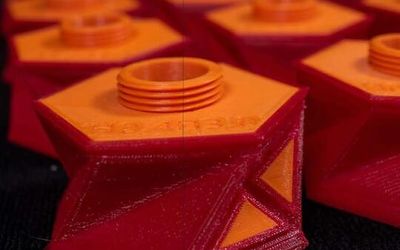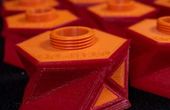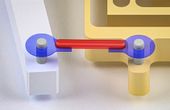The PISA-IIT SoftHand 2
A simple, robust and effective hand designed for grasping and soft manipulation. The Pisa/IIT SoftHand implements one soft synergy, actuated with a transmission system that uses one tendon, pulleys, and one motor. It demonstrates excellent grasping skills, in many different situations, combined with robustness and a simple control interface. The hand's simplicity, robustness, lightness and effectiveness make the hand ideal for both humanoid robotics and prosthetics.
Technical Specifications
| Motors | 2 |
| 24 |
Overview
The Pisa/IIT SoftHand 2 is an anthropomorphic robotic hand which has evolved from the Pisa/IIT SoftHand.
Pisa/IIT SoftHand 2 has 19 joints. Five of them are simple revolute joints, and they implement the adduction/abductionmovement of each finger. The remaining 14 joints are compli-ant rolling-contact element (CORE) joints
A single tendon moves from the palmbase, through all the fingers. Two motors actuate the tendon,pulling it from its two sides. If the motors move in the samedirection, the tendon length is shortened, and the SoftHand 2 closes. If instead the two motors move in opposition, the tendon slides ,and the hand moves according to the friction-driven DoA.
The hand includes two MAXONDC-X 22 s 24 V motors, mounted on the back. We also included86:1 gearboxes, characterized by 15 W of continuous output power. A single Dyneema tendon runs in the whole hand.The motor positions are acquired using magnetic sensors from Austrian Microsystem. Two encoders are included for each motor. The firmware is implemented on a custom electronic board, mounted on the bottom part of the hand.
The geometry of the hand's bottom part is designed to guarantee an easy connection with standard mechanical interfaces. Thanks to the proposed actuation principle, combined with the mechanical design, SoftHand 2 is completely self-contained. Motors, electronics, and sensors are all on-board, and only the energy supply is external to the hand. This design allows the easy plug-and-play integration of the SoftHand 2 with robotic manipulators.
A commercial version of the hand, the qbhand, is produced by a spinoff of Centro Piaggio and IIT, qbrobotics srl.
References
The adaptive synergies and the original Pisa/IIT SoftHand are briefly described, the SoftHand+ is introduced on a theoretical level, supporting its core idea with simulative results. The SoftHand+ prototype is validated in preliminary experiments.
Introduces and discuss the augmented adaptive synergies framework for a generic tendon-driven mechanism. Presents SoftHand 2 mechanical design. Derives a dynamical model of the pro-posed hand, to perform simulations motivating the considered control policy and corroborating the analytical results.
Repository containing the model of the Pisa/IIT hand.









